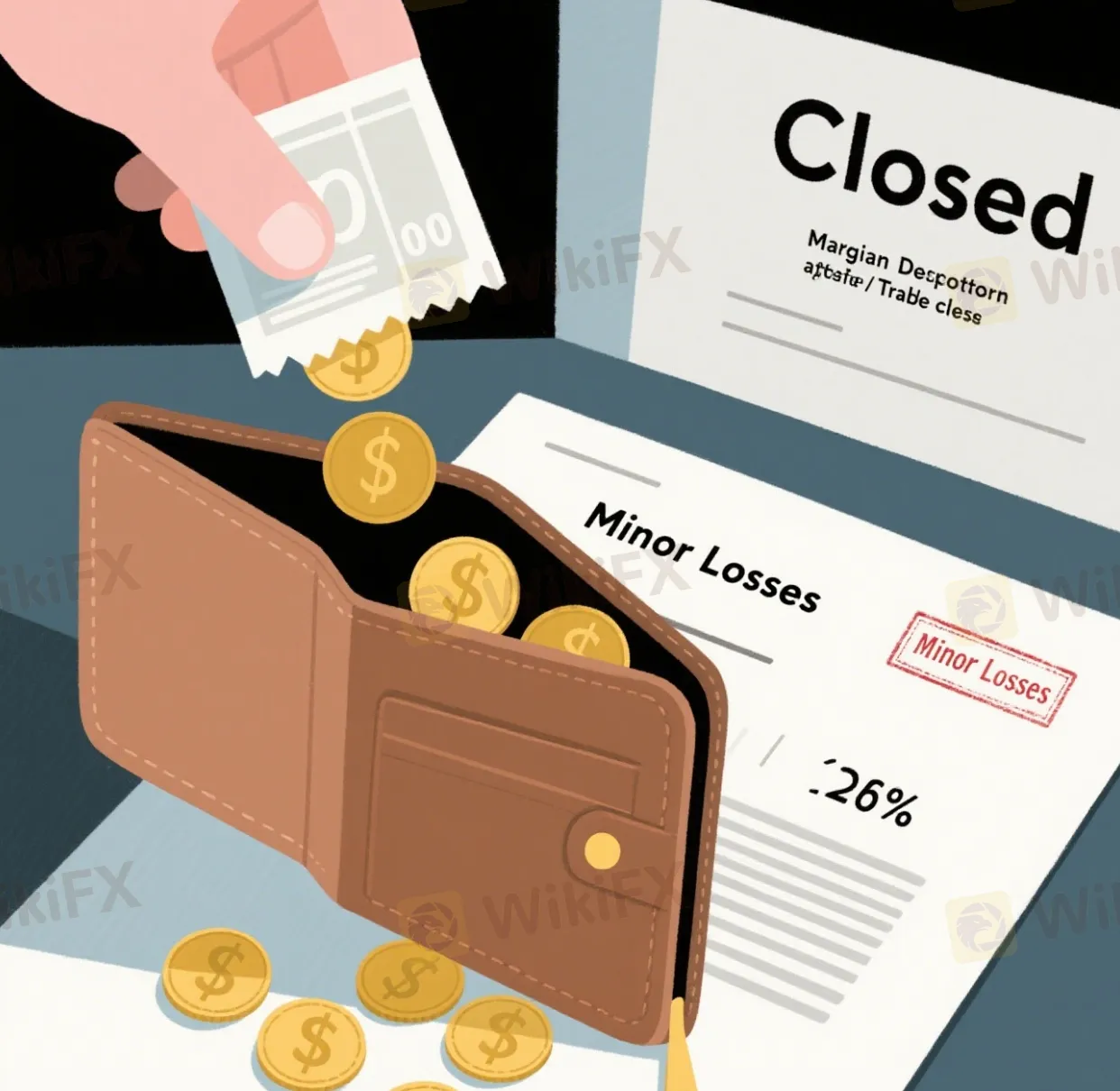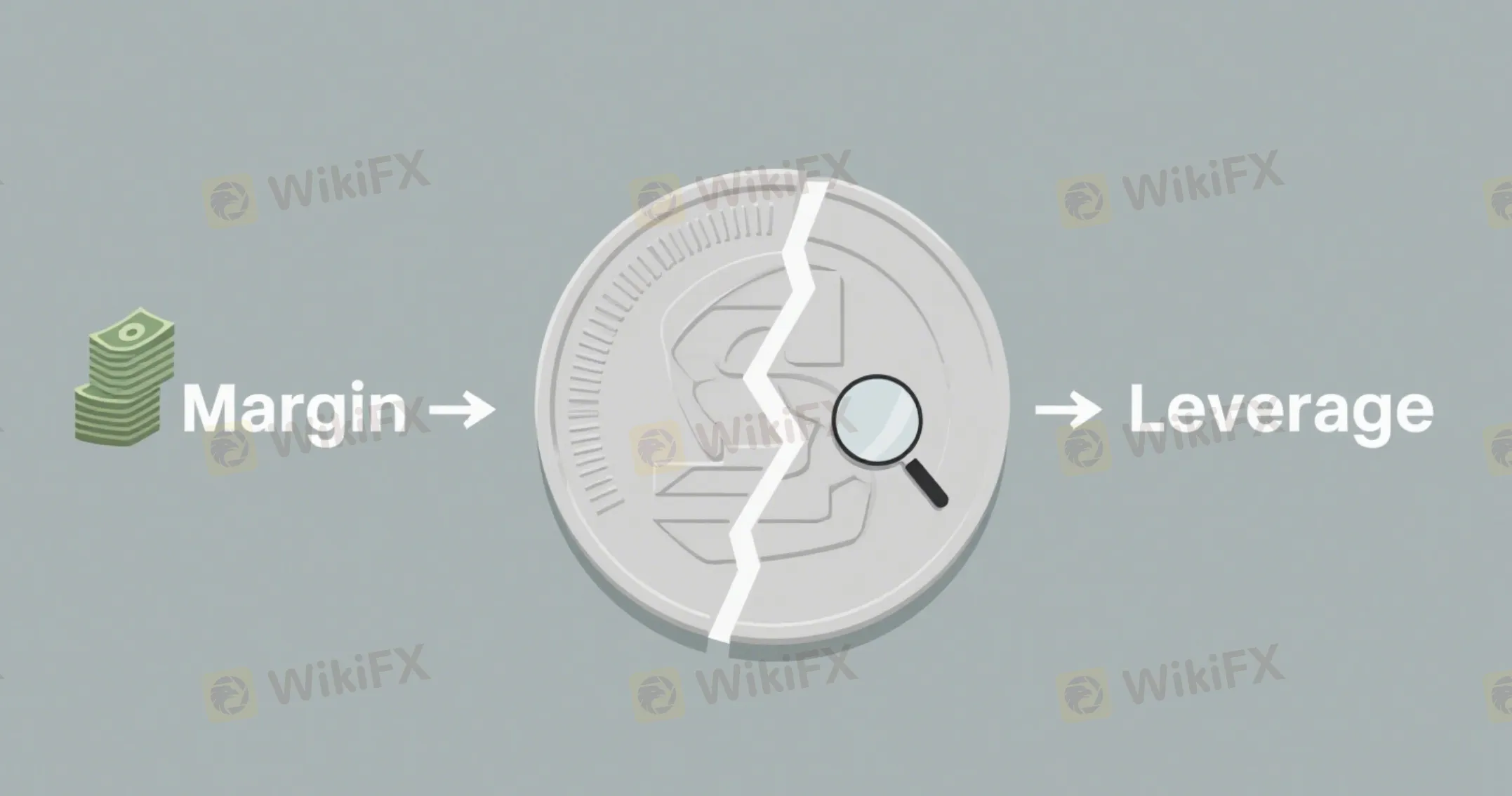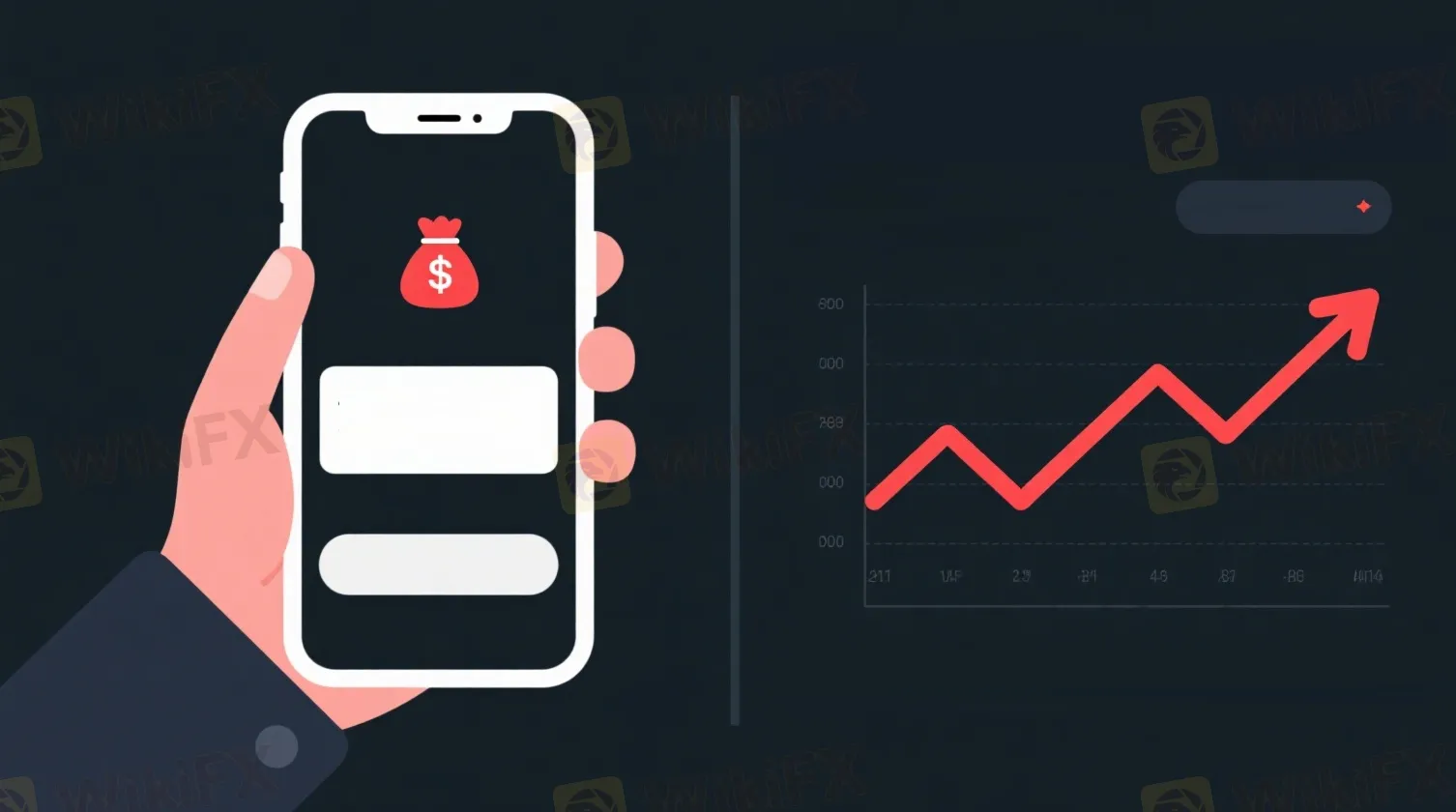Abstract:The central theme is this: what is a forex margin? It's a powerful tool. Like any powerful tool, from a chainsaw to a sports car, its effectiveness and safety depend entirely on the user's skill, knowledge, and discipline. In disciplined hands that respect risk, it's a tool for capital efficiency. In unprepared hands, it's a fast track to a zeroed account.
Master margin concepts and risk management before dreaming of large profits. Building your trading career on solid capital preservation is the only sustainable path to long-term forex market success.
What is Forex Margin?
So, what is margin in forex trading? Margin is money you must put down to open a trade. Think of it like a security deposit when you rent an apartment. You don't own the whole apartment with just your deposit. But it lets you use the space. When you move out, you get your deposit back (minus any damages).

Forex margin works the same way. It's not a fee you pay. Instead, it's part of your own money that your broker holds while your trade is open. Once you close the trade, you get this money back.
Here's what forex margin is NOT. It's not a cost like a spread or commission. It's your own capital, held temporarily, then returned when you close your trade. This idea connects directly to leverage. Margin requirements make it possible for brokers to offer you leverage. This lets you control much larger positions than your account balance would normally allow.
Margin and Leverage Work Together
Margin and leverage are two sides of the same coin. You can't have one without the other in forex trading. Leverage is like a multiplier that your broker gives you. It's shown as a ratio, like 50:1, 100:1, or 500:1. A 100:1 leverage ratio means for every $1 in your account, you can control $100 in the market.
Margin is the money you need to secure that leveraged position. It's that “security deposit” we talked about earlier. Brokers usually express margin requirements as a percentage of your total position size. For example, 100:1 leverage equals a 1% margin requirement.

Let's say you want to open a $100,000 currency position. Your broker offers 100:1 leverage. You don't need the full $100,000. Instead, you only need 1% of that amount, which is $1,000. This $1,000 is your required margin.
Higher leverage means lower margin requirements. This lets traders with smaller accounts participate in the market. But it also increases risk significantly.
Here's a simple table showing this relationship for a $100,000 position:
Many financial regulators limit how much leverage retail traders can use. For example, European authorities limit leverage to 30:1 on major currency pairs. These rules protect inexperienced traders from excessive risk.
Key Margin Account Terms
To trade with margin effectively, you need to understand the key numbers on your trading platform. These figures show your account's health in real-time. They also show how much more you can trade. Getting these wrong can be costly.
Balance Versus Equity
Your account balance is the cash in your account. It shows your starting money, plus or minus results from closed trades, deposits, and withdrawals. This number doesn't change while you have open trades.
Your equity is the real-time value of your account. It equals your balance plus or minus unrealized profits or losses from open positions. If your trades are winning, equity will be higher than balance. If they're losing, equity will be lower. The formula is: Equity = Balance + Floating Profit/Loss. Equity shows your account's true current worth.
Understanding Used Margin
Used Margin (also called Required Margin) is the total amount of your money that's locked up by your broker. This keeps all your open positions active. It's the sum of margin requirements for every open trade.
For example, if one trade needs $100 in margin and another needs $150, your total Used Margin is $250. This money isn't gone. It's just held in reserve. You'll get it back when you close the corresponding positions.
What is Free Margin?
Free Margin is money in your account that's available to use. It's the difference between your equity and used margin. This is capital you can use to open new positions or absorb losses from existing trades. The formula is: Free Margin = Equity - Used Margin.
Healthy free margin is essential for account stability. As your trades move into loss, your equity decreases. This reduces your free margin. If free margin drops to zero, you can't open new trades.
Your Margin Level Percentage
Margin Level is arguably the most important number for margin traders to watch. It's a percentage that shows your account's health. It displays the ratio of your equity to your used margin. The formula is: Margin Level (%) = (Equity / Used Margin) x 100.
A high margin level (above 1000%) means you have lots of free margin. You're using only a small portion of your capital to secure trades. This is very safe. A low margin level (below 200%) signals danger. It means your losses are becoming significant compared to the margin being used. This puts your account at risk of a margin call or stop out.
The Margin Call Danger Zone
Understanding margin calls and stop outs isn't just theory. It's a critical survival skill in forex trading. These are mechanisms brokers use to limit their risk. They also prevent your account from going negative.
A margin call is a warning. It's an alert that your Margin Level has dropped to a critical point. This threshold is usually around 100%. When your Margin Level hits 100%, your equity has fallen to the same level as your used margin. At this point, your free margin is zero. You can no longer open new positions.
The margin call is your broker saying, “Your account is in trouble. Take action now.” That action means either depositing more money or closing some losing positions.

A stop out is the action, not the warning. If you don't act after a margin call and trades keep moving against you, your Margin Level falls further. When it hits the stop-out level (often 50%), the system takes over. The broker's platform automatically closes your open trades. It starts with the one that has the biggest loss. This releases used margin and pushes your Margin Level back above the stop-out threshold.
For many traders, the first margin call is stressful and panic-inducing. It's a harsh lesson that the market doesn't care about your hopes. It only responds to the numbers in your account. Many traders freeze, hoping for the market to turn around. They watch helplessly as their positions get stopped out moments later. This is the ultimate price of poor risk management.
A Practical Margin Calculation
Theory is one thing, but seeing real numbers makes it clearer. Let's walk through a step-by-step example of how margin works in actual trading.
Here's our setup:
- Account Balance: $2,000
- Broker Leverage: 100:1 (1% margin requirement)
- Trade: Buy 1 mini-lot (10,000 units) of EUR/USD at 1.0800
Step 1: Calculate the Position's Value
The position value is the total size of the trade in your account currency (USD).
Position Value = Trade Size x Exchange Rate
Position Value = 10,000 EUR x 1.0800 = $10,800
Step 2: Calculate Required Margin
This is how much of your capital gets locked up for this trade.
Required Margin = Position Value x Margin Requirement
Required Margin = $10,800 x 1% = $108
This $108 becomes your Used Margin.
Step 3: Initial Account Numbers
Right after opening the trade, your account looks like this:
- Balance: $2,000 (unchanged)
- Equity: $2,000 (no profit or loss yet)
- Used Margin: $108
- Free Margin: $2,000 - $108 = $1,892
- Margin Level: ($2,000 / $108) x 100 = ~1851%
An 1851% margin level is extremely healthy. It shows very low risk.
Step 4: When the Trade Goes Against You
Let's say EUR/USD drops from 1.0800 to 1.0700. That's a 100-pip move against your buy position. For a mini-lot, each pip is worth about $1.
Loss = 100 pips x $1/pip = -$100
Now your account metrics are:
- Balance: $2,000 (still unchanged)
- New Equity: $2,000 - $100 = $1,900
- Used Margin: $108 (unchanged)
- New Free Margin: $1,900 - $108 = $1,792
- New Margin Level: ($1,900 / $108) x 100 = ~1759%
Your margin level dropped, but it's still very safe.
Step 5: Approaching a Margin Call
Let's see how much you'd have to lose to hit a 100% Margin Level (typical margin call point). This happens when your Equity equals your Used Margin.
In our case, this would be when Equity falls to $108.
Starting Equity was $2,000.
Loss needed for margin call = $2,000 - $108 = $1,892
This means the market would have to move 1,892 pips against you to trigger a margin call. With a properly funded account and reasonable position size, you have a big buffer against losses. Danger comes when traders open positions that are too large for their account.
The Double-Edged Sword of Margin Trading
Margin is often sold as a way to make huge gains from small investments. While technically true, this gives a dangerously incomplete picture. The reality is that margin amplifies everything equally. It's a true double-edged sword that cuts both ways with equal force.
The power of margin lies in capital efficiency. It democratized financial markets. It lets traders without huge institutional capital access the same opportunities. With a $1,000 account, you can control a $50,000 position (with 50:1 leverage). A small favorable market move can result in significant percentage returns on your initial capital. This amplified potential attracts many to forex trading.
The danger, however, mirrors this power exactly. The same leverage that magnifies gains also magnifies losses. That small market move, if it goes against you, can create devastating percentage losses just as quickly. This is the biggest risk in leveraged trading. It's the main reason many new traders fail. They get mesmerized by profit potential and blind to equal loss potential.
This creates a psychological trap: the temptation to over-leverage. When a broker offers 500:1 leverage, beginners might see it as a target. They think they should use it to maximize profit. This is a catastrophic mistake.
Consistently profitable traders aren't necessarily better at finding winning trades. They're better at managing risk. They treat margin with respect. They understand that one over-leveraged trade can wipe out weeks of profits. The smart approach is to see margin not as a get-rich-quick tool, but as a capital management tool. Use just enough leverage for your strategy and risk tolerance, not the maximum available.
Essential Margin Trading Rules
Trading with margin requires strict, disciplined risk management. The risks are real, but manageable if you follow non-negotiable rules. These practices separate professional traders from gamblers.
- Use Stop-Loss Orders Always
- A stop-loss order tells your broker to automatically close your trade if it reaches a certain price level. It's your primary defense. Before entering any trade, know exactly where you'll exit if the market moves against you. This pre-defines your maximum acceptable loss on that trade. It prevents a bad decision from becoming catastrophic. Trading without a stop-loss is like driving without brakes.
- Risk Only Small Percentages
- Never risk a large portion of your capital on one trade. Professionals follow the 1-2% rule. Never let potential loss on any trade (distance from entry to stop-loss) exceed 1% or 2% of your total account equity. This ensures that even consecutive losses won't cripple your account. You stay in the game long enough for your winning strategy to work.
- Choose Leverage Wisely
- Just because your broker offers high leverage doesn't mean you must use it. Many successful traders use very low effective leverage, even when high leverage is available. If possible, choose lower leverage settings (like 50:1 instead of 400:1). More importantly, control effective leverage by trading smaller position sizes relative to your account balance. This directly reduces your risk.
- Monitor Your Margin Level
- Your Margin Level is your account's vital sign. Check it frequently, especially with multiple positions open or during volatile markets. If you see margin level dipping below 500%, re-evaluate your positions and risk exposure. Don't wait for the broker's margin call warning. Be proactive in managing your account's health.
- Avoid High-Impact News Events
- Major economic news releases can cause extreme, unpredictable price swings in seconds. This volatility can gap prices past your stop-loss and trigger margin calls before you can react. Smart risk management means reducing or closing positions before such events.
Conclusion: Margin as a Tool
Throughout this guide, we've explored what is margin in forex trading: a deposit that, combined with leverage, lets you control large positions with small capital. We've seen how it magnifies both potential gains and, more critically, potential losses. The key metrics of equity, free margin, and margin level are gauges on your dashboard. They tell you your account's health at a glance.
The central theme is this: what is a forex margin? It's a powerful tool. Like any powerful tool, from a chainsaw to a sports car, its effectiveness and safety depend entirely on the user's skill, knowledge, and discipline. In disciplined hands that respect risk, it's a tool for capital efficiency. In unprepared hands, it's a fast track to a zeroed account.
Master margin concepts and risk management before dreaming of large profits. Building your trading career on solid capital preservation is the only sustainable path to long-term forex market success.










